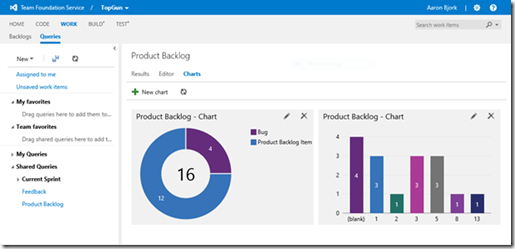Announcing Visual Studio and Team Foundation Server 2013 RTM Availability
Visual Studio 2013 has been released to the web!
-
Read the release announcements on Soma’s blog (for VS 2013 RTM) and Blogging Windows (for Windows 8.1)
This release has been an amazing ride. While adopting agile development processes across the entire developer division, we have constantly been adding value to Visual Studio and Team Foundation Server 2012 -all while planning and working on a new version of Visual Studio -2013. For Application Lifecycle Management, I have been grouping our efforts into 3 large loosely defined groups of features:
Quality enablement
Quality Enablement is ensuring application quality is pushed upstream so issues aren’t found late in the development cycle and striking the balance between agility and quality to delivering continuous value with software. Contributing to this goal, the diagnostics team has been sharing best practices on this and other MSDN blogs, about the many enhancements to the debugger and profiling tools in Visual Studio. To help you find all the links please start with the index here: Diagnostics Investments in Visual Studio 2013. In addition to the diagnostic tools we have been making large strides in the areas of Testing such as Coded UI testing for Windows Applications, Unit Testing for Windows Applications, Cloud based Load Testing and significant improvements in Web based Test management and execution.

Agile Planning
Visual Studio and Team Foundation Server agile processes, practices, and tools, are designed to help businesses deliver software faster, with continuous value, and minimal risk. By using the suite of tools in Visual Studio Team Foundation Server 2013, and combining those tools with Visual Studio Team Foundation Server, you can apply proven practices to manage your application’s lifecycle, from understanding customer needs through code design and implementation to deployment. You can use the instrumentation in these tools to trace requirements to checked-in code, builds and test results. These practices can help your team create software that is valued by your customers and that is faster and more reliable. The features we offer to enable Agile Planning goes on and on but to call out a few: Built-in task board, Backlog management, Capacity planning, Issue and bug tracking, Team Rooms, Storyboarding with Microsoft PowerPoint, Integrated feedback tool and process, Discuss Code Changes, Agile Portfolio Management and more.

Developer Operations
Visual Studio 2013 expands agile ALM practices to operations as a natural progression and emphasizes integrating the development and operations functions to reduce cycle time and ensure continuous delivery. With the release of Visual Studio 2013 we have done this in a couple of areas such as the release of the Microsoft Monitoring Agent, the integration of Intellitrace with System Center, enhancing Intellitrace to work in production environments and the inclusion of InRelease product into the Visual Studio suite of tools. Microsoft Monitoring Agent monitors computer infrastructure and application health. It collects diagnostic data, such as performance metrics, event logs, and traces. Microsoft Monitoring Agent can be used as a standalone tool or together with System Center Operations Manager. When monitoring .NET applications, you can direct the agent to save application traces in an IntelliTrace log format. InRelease is a Continuous Delivery solution for .NET teams that automates the release process from Visual Studio Team Foundation Server (TFS) up to production for faster and simpler deliveries. With pre-defined release paths, InRelease automatically deploys your application as a whole to multiple environments. Based on a business-approval workflow, InRelease improves coordination and communication between development, operations and quality assurance to make release cycles repeatable, visible, and more efficient.
I hope you enjoy Visual Studio 2013, thank you for all the words of encouragement, feedback and suggestions that has helped shape Visual Studio 2013- You really are an important part of the development process and the ALM features would not look like they do without your involvement. We look forward to hearing from your feedback / ideas so please add your suggestions to UserVoice or vote up an existing suggestion. Use Connect to log bugs, and Forums for Q&A. You can also contact Product Support for any issues in production. If you are just getting started be sure and check out: Chuck’s Top ten reasons to try out Visual Studio 2013. If you haven’t already downloaded the Visual Studio 2013 Preview or RC releases, when you first launch Visual Studio 2013 you’ll be invited to sign in to Visual Studio with a Microsoft Account. These New Start settings and start page video experience are my two favorite of the UI improvements. The new Start settings enhancements is where Visual studio will remember my settings across multiple computers INCLUDING ALL MY TEAM FOUNDATION SERVICE accounts I am a member of-YEAH! For more information on this check out Signing in to Visual Studio or Welcome. Sign in to Visual Studio. If you choose to not sign in, all the traditions ways to license your IDE still work, but features associated with signing in, like Synchronized Settings will not work.

While this post is no way meant to be a FAQ one of the questions I have seen a couple of times is around the compatibility of the Visual Studio and Team Foundation versions. If you are going to be running a mixed environment of versions (like most of us) please bookmark this page:
Compatibility between Team Foundation clients and Team Foundation Server
For other enhancements in the Visual Studio and Team Foundation Server 2013 release please make sure and check out this source of great information:

 Light
Light Dark
Dark
0 comments